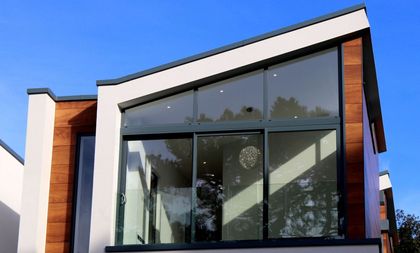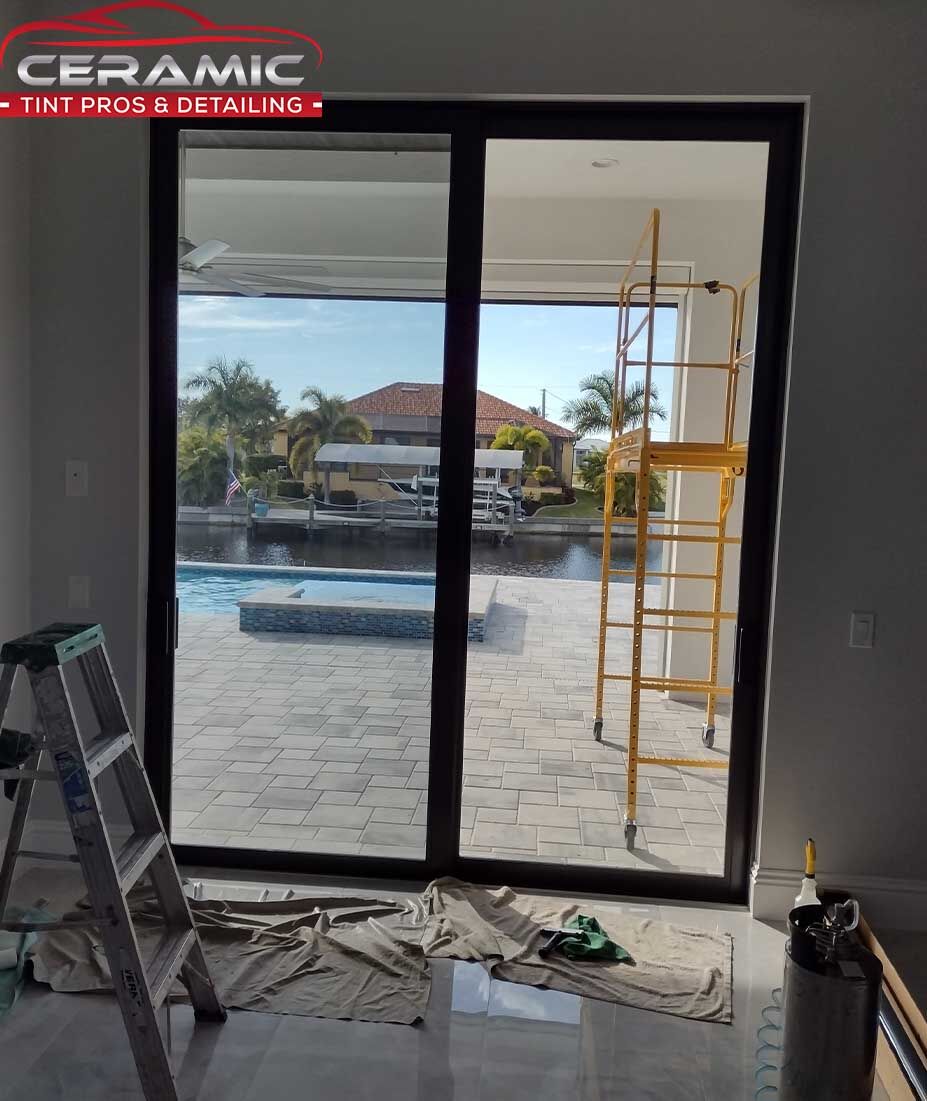Exactly How Residential Window Tinting Boosts Your Home's Energy Efficiency
Residential window tinting provides a compelling option for home owners looking for to enhance power effectiveness within their living rooms. By using specialized films to home windows, it efficiently lowers warmth transfer, consequently supporting interior temperatures and minimizing the need for too much home heating or air conditioning. This not only cuts power usage yet additionally supplies a more comfortable environment by minimizing glow. Recognizing the subtleties of just how tinting works and selecting the suitable kind for your home can be crucial. Strangely enough, what factors should one think about before making this financial investment?
Recognizing Window Tinting
Understanding home window tinting is vital for house owners seeking to improve both convenience and energy efficiency in their space. Residential Window Tint. Home window tinting entails the application of a thin film to the inside or outside surface of glass home windows. This movie can substantially modulate the amount of sunlight and heat that gets in a home, thus affecting interior environment problems
There are numerous types of window tinting movies readily available, each with distinct residential or commercial properties. The efficiency of home window tinting is commonly gauged by its Visible Light Transmission (VLT) percentage, which shows just how much light can pass with the film.
Benefits of Energy Effectiveness
Window tinting not only improves appearances but also plays a considerable function in enhancing power performance within household spaces. By minimizing warm transfer via home windows, colored films produce an extra secure indoor environment, which can lead to substantial decreases in power usage for heating & cooling. This energy performance equates into reduced energy bills, supplying home owners with considerable long-lasting savings.

Furthermore, home window tinting boosts the comfort of living spaces. By decreasing glow and blocking hazardous UV rays, tinted windows produce an even more pleasurable atmosphere, which can cause enhanced wellness for passengers. The security versus UV rays also aids protect furniture and flooring from fading, adding to the durability of household items.
Exactly How Tinting Works
Tinting films operate with a mix of sophisticated materials and innovations designed to control the amount of solar power getting in a home. Mostly composed of polyester, these films usually include ceramic or metallic fragments that soak up and mirror warm. This double ability enables them to substantially lower the infiltration of ultraviolet (UV) rays and infrared radiation while allowing noticeable light to go through.
The effectiveness of window tinting is determined by its solar warmth gain coefficient (SHGC), which indicates just how much solar power is transferred via the window. Reduced SHGC values are better as they signify higher heat denial. In addition, window colors can feature a range of tones, enabling property owners to personalize their aesthetic preferences while boosting energy performance.
In addition, these films work as an obstacle, preventing heat loss during colder months by showing interior heat back right into the living area. This thermal insulation effect enhances the cooling advantages acquired during warmer months, contributing to a well balanced interior climate year-round. By taking care of solar power successfully, residential home window tinting not only improves comfort but additionally plays a crucial role in lowering energy consumption and decreasing energy expenses.
Picking the Right Color

There are different kinds of window films offered, consisting of dyed, metalized, and ceramic. Ceramic films give outstanding warm control without endangering visibility and are extremely durable, making them a preferred choice.
Visible light transmission (VLT) is an additional critical element, as it shows the amount of all-natural light that can pass via the tinted glass. Property owners ought to choose a tint with a VLT that matches their lighting choices while still providing adequate glare decrease.
Additionally, examining the solar heat gain coefficient (SHGC) can aid determine just how well a tint can block warmth from sunlight. A reduced SHGC suggests much better heat control, inevitably boosting energy efficiency.
Installation and Upkeep Tips
Correct installment and you can try here maintenance are important parts in making the most of the benefits of household home see page window tinting. Experts also use specialized techniques and tools, which can enhance the longevity and effectiveness of the tint.
Adhering to installation, maintenance is important to lengthen the life of the home window film. It is advised to wait at least thirty day before cleaning the colored windows to permit the sticky to treat completely. When cleansing, make use of a soft cloth and a mild, ammonia-free cleaner to prevent harming the movie. Stay clear of unpleasant products that can damage the surface area.
Furthermore, regular examinations are valuable. Check for any peeling or bubbling, which can suggest incorrect installation or wear with time - Residential Window Tint. Addressing these problems immediately can protect against additional damages and keep power effectiveness. By sticking to these installment and upkeep tips, home owners can guarantee their home window tinting continues to provide considerable power financial savings and comfort for years to come.
Verdict
In final thought, property home window tinting offers as a reliable remedy for enhancing energy performance within homes. By minimizing heat transfer and obstructing hazardous UV rays, home window films contribute to lower power intake and enhanced interior convenience.
Home window tinting entails the application of a slim movie to the inside or outside surface of glass windows. By decreasing warm transfer via windows, tinted movies develop a much more steady interior climate, which can lead to considerable decreases in energy usage for heating and cooling.The effectiveness of window tinting is measured by its solar heat gain coefficient (SHGC), which shows just how much solar power is sent try this out via the home window. By taking care of solar energy effectively, household home window tinting not just boosts comfort but likewise plays an important role in reducing power intake and decreasing energy expenses.
By minimizing warmth transfer and blocking dangerous UV rays, window movies add to lower energy intake and enhanced indoor convenience.